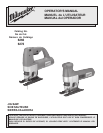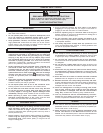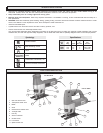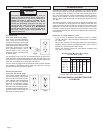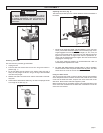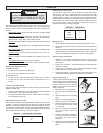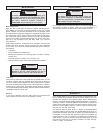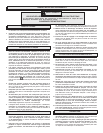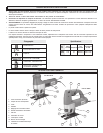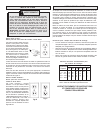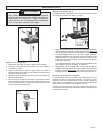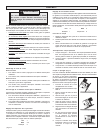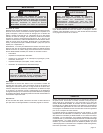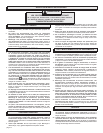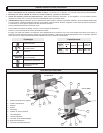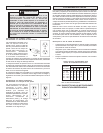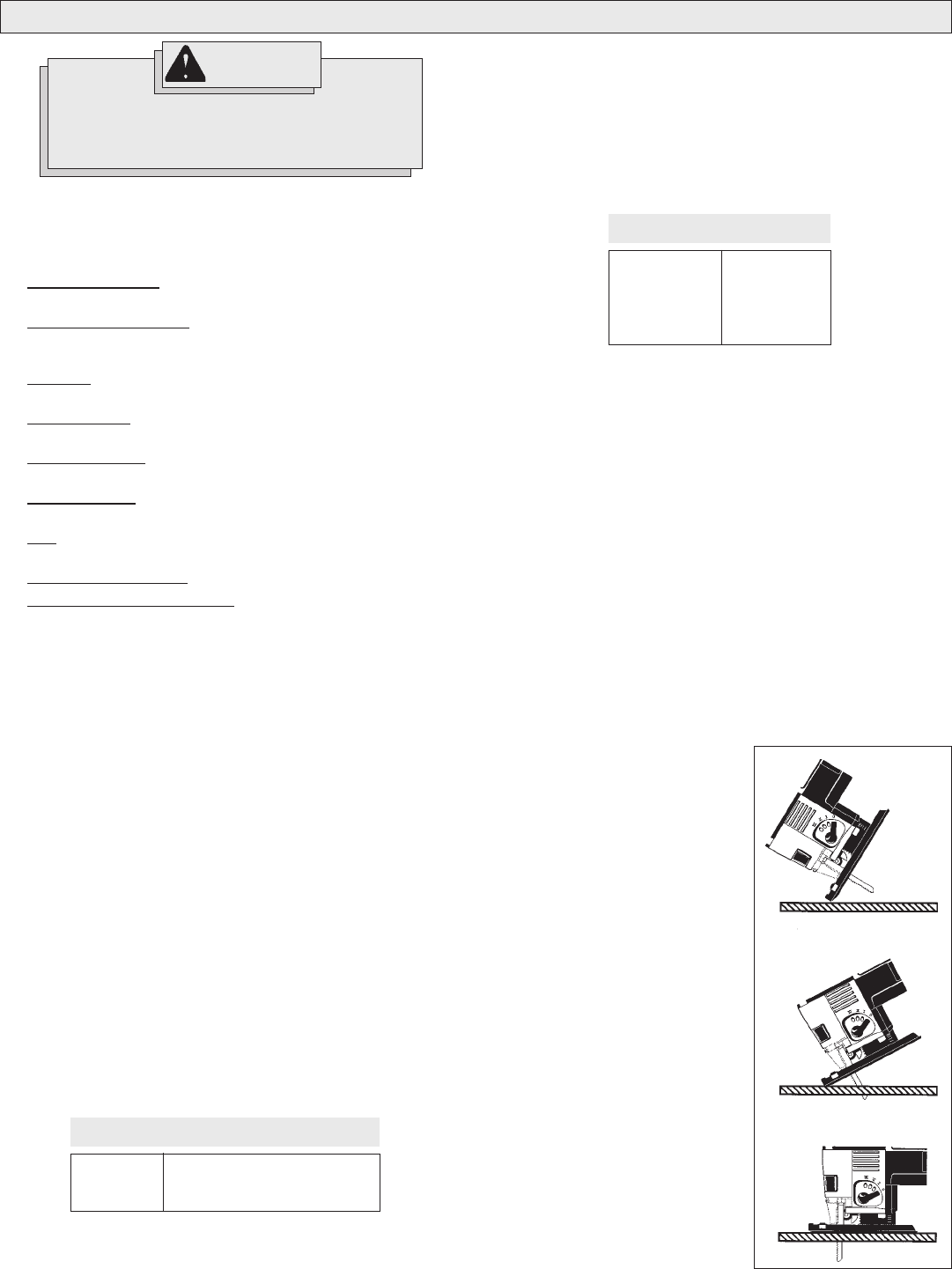
page 6
OPERATION
To reduce the risk of injury, wear safety goggles
or glasses with side shields. Unplug the tool
before changing accessories or making
adjustments.
WARNING!
Making the Cut
1. Set the stroke and orbital action according the material to be cut.
2. Position the tool with the front part of the shoe on the workpiece and
switch on.
3. Hold the machine firmly against the workpiece and guide it along the
desired cutting line. Do not feed into the work too hard, light pres-
sure on the saw blade will achieve the optimum cutting speed.
Special Cutting Techniques
1. Straight cuts To obtain a perfectly straight cut, clamp a strip of
wood as a guide along the workpiece or use the parallel guide
(accessory).
2. Cutting at a bevel angle adjust the shoe to the correct angle (see
Adjusting the Shoe).
3. Cutting close to obstacles move the shoe backward to provide
greater clearance (see Adjusting the Shoe).
4. Cutting Sheet Metal sheet metal may vibrate when being cut. To
minimize this vibration clamp the workpiece to a wood base.
Plunge Cutting (Fig. 4)
These Jig Saws are well suited to mak-
ing plunge cuts into soft materials with-
out a pre-drilled hole. Harder materials
require a starter hole with a diameter
slightly over the width of the blade. To
make a plunge cut:
1. Move the shoe all the way back.
2. Set the orbital action selector lever
to 0.
3. Keep the power cord out of cutting
area.
4. Make sure nothing below the in-
tended cut area will be damaged.
5. Without switching the tool on, place
the front edge of the shoe solidly
on workpiece.
6. Align the blade with the intended
cut line, but keep it above the
workpiece.
7. Using the front edge of the shoe as
a pivot, turn the tool on and gradu-
ally lower the blade into the
workpiece.
8. When the shoe is firmly against the
workpiece normal cutting may take
place.
The 6266 and 6276 Orbital Action jig saws can cut a wide variety of
materials including metal, wood and plastic. Cuts may be straight lines,
bevels, curves or internal cut-outs. Notable features of these jig saws
include:
Rapid blade change without tools with the Quik-Lok blade change
system.
Adjustable Orbital Action blade stroke cuts faster by pressing the
blade against the work only during the upstroke. This is particularly
effective when rough cutting thick wooden boards.
Electronic dial speed control maintains the pre-set speed during the
cut.
Adjustable shoe can be tilted by up to 45 degrees in either direction
for bevel cuts.
Non-marring shoe cover to protect the surface of workpiece from
marring and scratching.
Sawdust blower removes the sawdust ahead of the cut for im-
proved visibility.
Built in manifold for vacuum assisted dust collection (hose is op-
tional).
Transparent blade cover improves dust extraction.
Vibration dampened mechanism permits quieter, smoother running.
Starting and stopping the tool
For Model No. 6266
1. To start the tool, press the On/Off switch.
2. To stop the tool, release the On/Off switch.
For Model No. 6276
1. To start the tool, push the On/Off switch forward until I is visible.
2. To stop the tool, push the On/Off switch backwards until 0 is
visible.
Locking the On/Off Switch
The lock button holds the trigger in the ON position for continuous use.
(Model No. 6266 only)
1. To lock the On/Off switch, hold the lock button in while pressing the
On/Off switch. Then release the On/Off switch.
2. To unlock the On/Off switch, press the On/Off switch and release.
The lock button will pop out.
Adjusting stroke per minute
The strokes per minute may be adjusted with the speed control dial. The
numbers 1 through 7 are printed on the dial with 1 being the slowest
speed and 7 the highest speed. Recommended cutting speeds for vari-
ous materials are listed below. Optimum cutting speeds should be deter-
mined by the user for specific cutting requirements. Strokes per minute
may be adjusted when the tool is running or stopped.
Wood
Metal
Plastic
7
4-5
2
Material Recommended saw speed
Adjusting the orbital action
The amount of orbital action may be adjusted with the orbital action
selector lever. In general, a large orbital action (III) should be used with
soft materials and a small orbital action (0) should be used with hard
materials. When a smooth cut is required no orbit (0) should be used.
Recommended orbit settings for different material compositions are pre-
sented below. The optimum orbital action should be determined by the
user for their specific cutting requirements. Orbital action may be ad-
justed when the tool is running or stopped.
Material Orbital action
Wood
Metal
Plastic
Smooth Cut
l I I
0
l
0
Fig. 4



